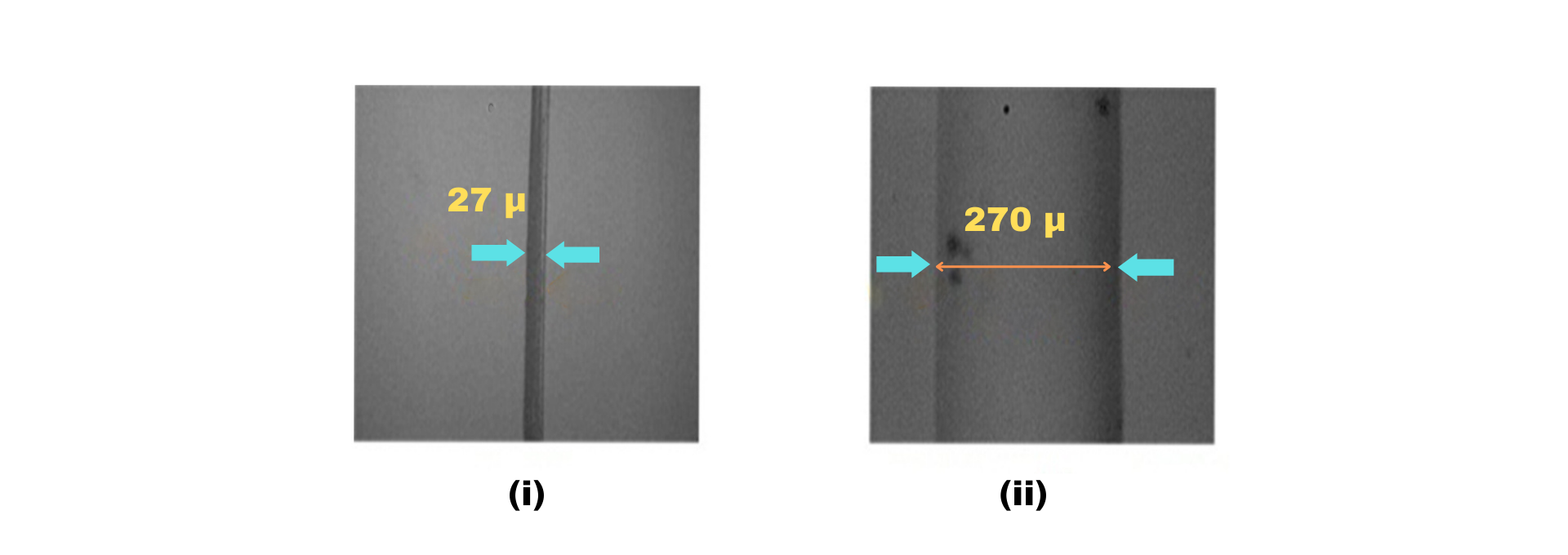Smart Textiles:
When a textile performs an additional function in addition to its conventional purpose, it earns the label of a “Smart Textile.” If the additional functionality of the textile changes with variations in usage conditions, it qualifies as an “Active Smart” or “Intelligent Textile.” Conventional textiles cover the human body and provide a protective barrier against dust, sunlight, wind, and other contaminants in the normal living environment. They also perform technical functions that make use of their robust and adaptable structure. Textiles may perform additional functions specific to unfavorable or extreme climates, job environments, or professions, enhancing the user’s adaptability and productivity.
How Smart Textiles work?
The following figure illustrates how smart textiles work and helps in understanding their operational functionality:

Classification of Smart Textiles Through Active Responses:
Smart textiles, or Responsive textiles, can undergo a broad classification based on the active responses they exhibit:
- Shape alteration: Smart textiles can undergo shape alteration, either reversible or unidirectional, by increasing or decreasing their dimensions and bending.
- Storage and release: Smart textiles have the capacity to store and release heat, drugs, chemicals etc.
- Electronic functionality: Smart textiles may also possess electronic functionality for communication, entertainment, and monitoring purposes.
Shape-Changing Smart Textiles (Fibers, Yarns and Fabrics):
Researchers developed shape-changing fibers, yarns, and fabrics using stimuli-sensitive polymers (SSPs). These amazing polymers undergo a reversible transformation from one state to another in response to numerous environmental stimuli. The scientific community refers to these amazing materials as smart-polymers or intelligent-polymers.
The linear SSPs change from soluble (clear) to insoluble (turbid) at the transition temperature. In the gel form, however, they swell and de-swell due to the absorption of water or discharge. This results from the existence of cross-links. In most applications, people utilize these materials in gel or cross-linked form. A slight change in the relevant stimulus can produce alterations in their configuration, dimension, or physical attributes.

Fig: Smart breathable textiles using temperature sensitive polymers
Researchers extensively study temperature-sensitive polymers among the several stimuli-sensitive polymers. In addition to temperature, these polymers can undergo reversible transitions when exposed to chemical and physical stimuli such as-
- Electric field.
- Light.
- Pressure.
- Solvent composition.
- Sound.
- Stress.
- Magnetic field.
- Chemical and bio-chemical stimuli (pH and ions). These polymers offer numerous prospects for the development of intelligent materials.

Fig: Schematic representation of different types of stimuli
Various critical applications in biomedical and engineering fields benefit from smart or intelligent materials. They can respond to their environment by changing their shape or properties. These applications include-
- Controlled drug delivery.
- Enzyme-activity control.
- Controlled drug separation processes.
- Vascular tissue culture.
- Artificial muscles and smart textiles.
Application of Smart Polymers:

Temperature-Sensitive Smart Textiles:
Researchers create temperature-sensitive smart textiles by utilizing temperature-sensitive polymers (TSPs).These type of smart polymers undergo a transition referred to as Lower Critical Solution Temperature (LCST). These polymers possess both hydrophilic and hydrophobic groups within their structure.
|
Polymer group |
Polymer Name/Chemical repeat unit |
LCST,°C |
|
Poly (N-alkyl substituted acrylamides) |
Poly(N-Isopropylacrylamide) |
32 |
|
Poly(N-n-propylacrylamide) |
16-19 |
|
|
Poly(N-isopropyl methacrylamide) |
40 |
|
|
Poly(N-cyclopropylacrylamide) |
4-6 |
|
|
Poly (N-vinyl alkylamides) |
Poly(N-vinylcaprolactam) |
32 |
The structure of TSPs exhibits a delicate hydrophobic-hydrophilic equilibrium. Slight temperature variations around the critical temperature cause the chains to either collapse or expand. This results in response to the altered interactions between the hydrophobic and hydrophilic components of the polymeric chains and the aqueous medium. The most extensively researched thermo-sensitive polymer is poly-N-isopropyl acrylamide (PNIPAm). It features a hydrophobic backbone with a pendant group comprising a hydrophilic amide moiety and a hydrophobic isopropyl moiety.

Fig: Hydrophilic and hydrophobic moieties in PNIPAm polymer (Transition temperature 32°C)
When the temperature remains below the Lower Critical Solution Temperature (LCST), hydrophilic interactions take dominance. These interactions involve hydrogen bonds forming between water molecules and the N-H or C=O groups of PNIPAm. These reactions cause the polymer to be soluble in water. However, when the temperature surpasses the LCST, hydrophobic interactions become dominant, leading the polymer to become insoluble in water. It is possible to adjust the transition temperature of these TSPs, one can:
- Alter the ratio of hydrophilic and hydrophobic groups.
- Incorporate additives.
- Adjust the nature of the polymer system.
These thermo-sensitive monomers make polymer gels do the following:
- In water below the transition temperature, change shape through swelling.
- Deswell above the transition temperature.
Shape-Changing Smart Fabrics:
Researchers produce shape-changing model fabric by coating cotton yarns with a temperature-responsive polymer and subsequently cross-linking them. In the case of coatings, Poly carboxylic acid generates the cross-links, forming covalent bonds between the copolymer’s amide side-groups and the hydroxyl group of the cellulosic substrate. In comparison to polymer-gel discs, the table below illustrates the transition properties and response time of TSP in various processed forms.
|
Type |
Thickness |
Swelling (change in shape %) |
Time for 70% of equilibrium swelling |
Time for complete deswelling |
|
Gel disc (conventional) |
2 mm |
490 |
90 min |
50 min |
|
Coated on Yarn |
39 µ m |
4500 |
3 min |
10 sec |
|
Fiber |
30 µ m |
17800 |
<5 sec |
<1 sec |
Table: Comparison of transition properties of TSP’s in different processed forms.
The responsive coated yarn demonstrates an astonishingly high degree of swelling and deswelling across the transition temperature. It achieves 70% of equilibrium swelling in just 3 minutes timeframe, while gels take 90 minutes for the same degree of swelling.
The following figure(a) illustrates the optical photographs of the model fabric at different temperatures. The yarns indicate high swelling at temperatures below the transition temperature, but beyond the transition temperature, the yarns Deswell, liberating all the water. In a water bath, the model fabric’s percentage cover ranges from 0% at 6 °C to 39% at 30 °C and 57% at 80 °C. For a number of cycles, this transformation is totally reversible. The optical microphotographs in figure(b) clearly show how porosity (% cover) changes with temperature.

Fig: (a) Optical micrographs of model fabric at different temperature (b) Corresponding percentage cover of model fabric at different temperatures
Shape Changing Smart Fibers:
The researchers also successfully transformed the TSP into a fine diameter, shape-changing textile fiber. The optical micrographs (which show a 178% change in volume) in Figure illustrate how the fiber goes through changes in both diameter and length with temperature variation.

Fig: The optical micrograph of thermo-responsive shape changing fiber at 100 X
(I) De-swollen fiber in water at 80°C (ii) Swollen fiber in water at 6°C.
The time requirement for a 70% transition (swelling) decreased considerably from 90 minutes for the 2 mm gel disc to less than 5 seconds for the TSP fiber. Furthermore, the change in shape (swelling ratio) of the fibers increased by 36 times.
pH-Responsive Smart Polymers:
pH responsive smart hydrogels are polymers that can sense the pH of their environment as a signal, estimate the strength of the signal, and alter their properties accordingly. According to the researchers, the crucial component of the system is the existence of ionizable weak acidic or basic moieties attached to a hydrophobic backbone. The functional groups consist of ionizable acidic pendant groups. For example carboxylic and sulfonic acids, or basic groups like amines that can accept and donate protons in response to changes in environmental pH. As the surrounding pH shifts, the degree of ionization in pendant groups undergoes a significant change at a specific pH known as pKa. The net charge of pendant groups quickly changes, altering the hydrodynamic volume of the polymer chains. A collapsed hydrophobic state to a soluble hydrophilic state transition occurs as a result of the polymer.

Fig: Effect of pH on chemical structure (a) Poly(acrylic acid),
(b) Poly (N,N diethylamino ethylmethacrylate)
pH-Responsive Smart Textiles:
The table below shows some approaches based on co-monomers consisting of acidic carboxylic acid groups or basic amino groups. The hydrogel’s ability to swell and contract depends on a number of variables, including its:
- Hydrophobic-hydrophilic behavior’s.
- Crosslink density (elasticity).
- charge density.
- pKa.
|
Monomer |
Responsive group |
Responsive to |
|
Acrylic Acid and its derivatives |
-COOH |
Alkaline pH |
|
Vinyl monomers with sulphonic acid |
-SO3H |
|
|
N-Vinyl pyrrolidone |
NH2 Or Substituted Amino |
Acidic pH |
|
N,N-diethyl amino ethyl methacrylate |
Table: Commonly used synthetic monomers and polymers for pH sensitive hydrogel
Hydrogels are a desirable replacement for artificial muscles. However, the excessive water content is the cause of their poor mechanical qualities. In contrast, polymeric fibers have superior mechanical properties as a result of their high degree of crystallinity and orientation. Therefore, thin fiber forms with improved transitional qualities are preferred for usage in artificial muscles, sensors, and actuators.
Thermo-Responsive Smart Textiles:
A thermo-responsive textile can also qualify as an environmentally responsive textile. The term “thermo-responsive textile” refers to clothing that actively helps to regulate body temperature, with 33.4 °C being the ideal skin temperature for humans. The human body independently controls its body temperature. To control the release of heat, the human body utilizes various mechanisms, including:
- Blood vessel dilation.
- Blood vessel constriction.
- Muscle activity.
- Sweat gland function.
According to the external temperature, individuals should put on or take off garments to keep their skin temperature between (30.4-36.4)°C. However, if clothing had the capability to independently modify its thermal resistance in response to temperature, it would be able to manage the rate of heat release and control the body’s core temperature. The use of Phase Change Materials (PCMs) can boost thermal comfort. PCMs are specific materials that go through phase changes from solid to liquid. First absorption, then the release of heat, occur from liquid to solid.
The materials must exist as liquids in one of the transition states. For that, researchers need to encapsulate them to prevent them from leaking out of the clothing during a phase change.
Phase Change Materials:
Phase Change Materials (PCMs) are substances used to store and release thermal energy during phase transitions. They are required to exist in liquid form during specific transition states. To prevent any leakage from the clothing during these phase changes, it is essential to encapsulate the PCMs securely.
Mechanism of PCMs:
The mechanism of Phase Change Materials (PCM) involves their ability to store and release thermal energy during phase transitions. When exposed to heat, PCM absorbs energy and changes from solid to liquid form, storing the latent heat. Conversely, when the surrounding temperature decreases, PCM releases the stored energy as it changes back from liquid to solid state. This property allows PCMs to act as effective thermal energy storage mediums, helping to regulate temperatures in various applications, such as building insulation, textiles, and electronics cooling. The reversible phase change process enables PCMs to repeatedly absorb and release energy, making them valuable for efficient thermal management systems.

Fig: Mechanism of PCMs
Application of PCMs:
These materials can provide benefits and find applications in various situations, such as the following:
- Encapsulated Phase Change Materials (PCM) in clothing can produce a constant temperature buffer, enhancing wearer comfort. The PCM incorporated within the fabric absorbs excess body heat when the surrounding ambient temperature rises, preventing the wearer from feeling too hot. In contrast, the PCM releases the heated energy as the surrounding air becomes cooler to keep the wearer warm. This dynamic temperature regulation helps maintain a stable and comfortable experience for individuals, regardless of external weather conditions. As a result, clothing with PCM technology can boost overall comfort and performance in various activities and environments.
- These include occupations that require the individual to deal with extreme changes in the surrounding environment. For example:
- Pilot’s uniform in a fighter plane.
- Soldier’s uniform in extreme climate zones.
- Uniforms for workers operating in extreme temperatures.
- Firefighters’ gear.
- Tents and temporary structures designed for extreme climates.
- Automobiles with climate control features.
Microencapsulated PCMs:
Microencapsulated Phase Change Materials (PCMs) refer to tiny particles of PCM materials that are encapsulated within a protective coating or shell. The microencapsulation process involves enclosing the PCM substance, which can be a solid-liquid phase-changing material, within microscopic capsules, usually made of polymers. This protective shell acts as a barrier, preventing the PCM from leaking or reacting with other components until it undergoes a phase change.

The microencapsulation technique enhances the properties and applicability of PCMs in various fields. It allows the PCM to remain stable and dispersed in a solid state at room temperature, and upon exposure to heat, it undergoes a phase transition from solid to liquid, storing thermal energy. Conversely, during cooling, the PCM releases the stored energy as it solidifies again. This controlled release of thermal energy makes microencapsulated PCMs highly valuable for applications such as:
- Smart textiles.
- Building materials.
- Thermal energy storage systems.
- Temperature regulation in various products and environments.
Microencapsulated PCMs must have the following key parameter:
- Particle size and consistency.
- A high core-to-shell ratio.
- Thermal and chemical stability
- Mechanical stress tolerance.

Future aspects of PCMs in Smart Textiles:
The primary focus of early research on latent heat storage was on examining the dehydration and hydration properties of inorganic salt hydrates. Their exceptional properties, including high energy storage density and superior thermal conductivity, drew this attention. However, inorganic salt hydrates cause corrosion and are incompatible with a variety of materials. Moreover, they also exhibit supercooling and phase separation during thermal cycling transitions. To overcome some of the issues with inorganic PCMs, researchers have shifted their focus to studying the properties of various organic compounds and their mixes as potential novel PCMs.
They are also attempting to improve the heat capacity, thermal stability, thermal conductivity, and durability of composites that house PCMs. This research shift intends to overcome the limits of inorganic PCMs and investigate more efficient and practical alternatives for latent heat storage applications.
For clothing applications, researchers prefer using PCMs that undergo phase transition within a temperature range of 18 °C to 35 °C. Additionally, among the suitable options for textile applications, paraffin waxes, particularly n-eicosane, n-octadecane, and n-hexadecane, stand out as highly appreciated choices. This preference is primarily attributed to their high latent heat capacity and the temperature interval at which they undergo phase change.
The thermal management in smart textiles is primarily governed by three main factors:
- The characteristics of PCMs.
- The composition of the shell that encapsulates them.
- The quantity of microcapsules integrated into the textile structure.
In conclusion, to achieve suitable thermal management in the textile product, tailored to meet specific end-use requirements, it depends on adding an adequate amount of micro PCMs to coat the fabrics effectively.
Reference:
- Manjeet jassal, Ashwini K Agarwal & Ninad S Save, Thermoresponsive smart textile, Indian Journal of Fibre & Textile Research Vol. 31, March 2006, pp. 52-65.
- S. Mondal, Phase change materials for smart textiles – An overview, Applied Thermal Engineering, Volume 28, Issues 11-12, August 2008, Pages 1536-1550.





0 thoughts on “Smart Textiles: Enhancing Protection and Adaptability for Today’s World”
Smart Textile
In 2041, Smart Textile will play an important role because it will be named as Smart Bangladesh
Hope you understand the topic.
Wonderful article sir
Thanks for the compliment.
Nice explainetion.
Thank you sir🙂
Hope you understand it.